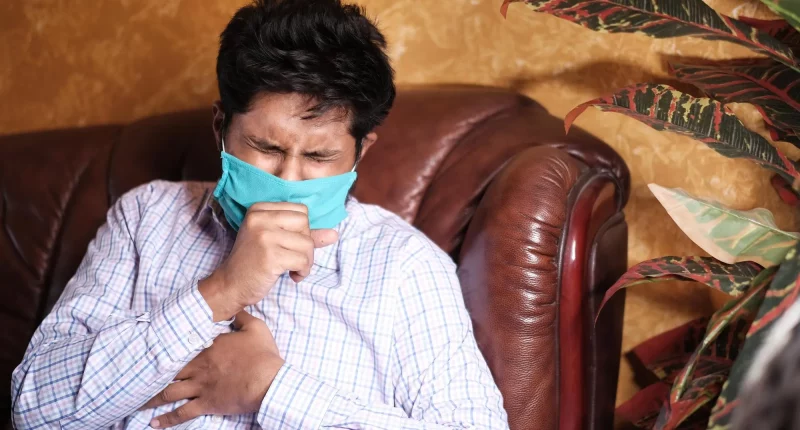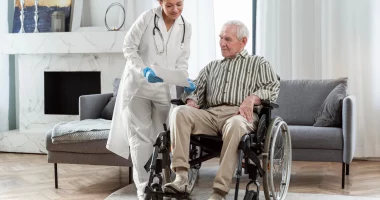Acute respiratory distress syndrome (ARDS) is a severe problem that happens when your body doesn’t get enough oxygen from your lungs. It usually comes along with lung infections, injuries, or really bad sicknesses. ARDS can get worse quickly, and sometimes it can even cause death.
People call ARDS by different names like acute hypoxemic respiratory failure (AHRF), respiratory distress syndrome (RDS), and others. The big deal with ARDS is that it makes it hard for your body to get the oxygen it needs. This can lead to other problems like infections, pneumonia, lung collapse, kidney troubles, weak muscles, and feeling confused. It’s definitely something you want to watch out for and get treated as soon as possible.
Symptoms
When you have acute respiratory distress syndrome (ARDS), you might notice some changes in how you feel. Most people start feeling these symptoms when they’re already in the hospital, but sometimes they can happen outside of it too. For instance, if you get a bad infection like pneumonia or accidentally breathe in vomit.
Here are some signs and symptoms of ARDS:
- Feeling like you can’t breathe well
- Coughing a lot
- Feeling confused or not as alert as usual
- Being very tired or sleepy
- Feeling dizzy or faint
- Having low blood pressure, which can make you feel weak
- Lips and nails turning bluish or having blue spots on your skin
- Having a fever
Sometimes, if the inflammation and fluid stick around in your lungs for a while, ARDS can get worse. Your lung might even collapse, which is called a pneumothorax.
Doctors have a way of describing how bad ARDS is. They classify it as mild, moderate, or severe as stated by the Berlin definition, which they made in 2011. The more severe it is, the harder it can be to survive. Plus, if it’s really bad, you might need to stay on a machine called a respirator for longer to help you breathe.
Causes
Our bodies need oxygen to work properly, and we get it when we breathe in air. This air goes into our lungs, where tiny sacs called alveoli help transfer the oxygen to our blood. Then, our blood carries the oxygen to all areas of our body, like our heart, brain, and kidneys.
But in acute respiratory distress syndrome (ARDS), something goes wrong. Maybe there’s an injury, an infection, or another problem that makes fluid build-up in those tiny sacs in our lungs. This makes our lungs swell up, and fluid and stuff from our blood start leaking into those sacs, making it tough to breathe. Sometimes, even blood can leak into our lungs, making things worse.
When this happens, our lungs can’t function properly. They can’t get enough air, and they can’t get rid of the waste gas, carbon dioxide, like they should. Breathing feels really tough and tiring.
As the oxygen levels in our blood drop, our important organs don’t get enough oxygen either. This puts them in danger of getting hurt or not working right. It’s a serious problem that needs to be treated as soon as possible.
ARDS can be triggered by various sickness, situations, and conditions. These include lung infections like pneumonia, severe cases of flu such as avian flu, and other infections. Complications during routine surgeries, blood transfusions, or the presence of a blood clot in the lung can also lead to ARDS. Inhaling chemicals or substances like vomit or food accidentally, experiencing acute pancreatitis or giving birth, can also be factors. Additionally, inhaling smoke from sources like house fires, nearly drowning, experiencing hypotension due to shock, or overdosing on certain drugs like propoxyphene, heroin, aspirin, or methadone, or as well as experiencing seizures or strokes, are all potential triggers for ARDS.
ARDS can happen because of other health problems too. For example, if your pancreas gets swollen (we call that inflammation), or if you get really bad infections in your whole body (we call that sepsis), or if you get burned badly, or even if you have a bad reaction to some medicines you take.
Sometimes, infections in your lungs cause ARDS, and this is the case for about 46 out of every 100 people who get ARDS. But in about 33 out of every 100 cases, the infection starts somewhere else in your body and then leads to ARDS.
It’s a bit puzzling why some health problems not directly related to the lungs can still cause ARDS. But one idea is that when these problems happen, our bodies might make harmful stuff that’s too much for our system to handle. This stuff could end up causing ARDS.
Risk factors
Certain things can make some people more likely to get ARDS than others.
Some of these risk factors include:
- Excessive Smoking
- Drinking too much alcohol
- Needing to use oxygen for another lung problem
- Having had a risky surgery recently or undergoing chemotherapy
- Being very overweight
- Having low levels of a protein in the blood
Usually, ARDS shows up within a day or two after something happens, like an injury or getting sick. But sometimes, it can take a bit longer for the symptoms to show up, like around 4 to 5 days.
Diagnosis
When someone might have ARDS, the doctor needs to do some tests to figure out what’s going on. Here are some tests they might do:
- Blood Test: They’ll take some blood to check how much oxygen is in it and if there’s an infection. If there is, they’ll want to know what kind.
- Pulse Oximetry Test: This test involves putting a little sensor on your finger or ear to see how much oxygen is getting into your blood.
- X-ray: An X-ray picture of your chest can show if there’s fluid in your lungs and if your heart is bigger than it should be.
- CT Scan: Sometimes, they’ll want more detailed pictures of your lungs and heart, so they might do a CT scan.
- Echocardiogram: This is a fancy test that uses sound waves to see how your heart is working.
These tests also help because some signs of ARDS can look like signs of heart problems, so the doctor needs to be sure.
Sometimes, they might even take some fluid out of your lungs to test it for infection.
There isn’t one single test to say for sure if you have ARDS, so the doctor needs to do a bunch of tests to make sure it’s not something else, like pneumonia or heart failure, even though ARDS can sometimes happen because of pneumonia.
Treatment
Treatment for ARDS focuses on a few things:
First, doctors try to manage whatever caused ARDS in the first place and fix it if they can. Then, they work on getting more oxygen into the blood.
Most people with ARDS need to stay in intensive care or a special unit where they can be closely watched. They often need a machine called a ventilator to help them breathe. Depending on how bad it is, they might get oxygen through a mask or a tube that goes into their throat and down into their lungs.
They also need to get fluids and nutrients, which can be given along with a tube that goes from their nose to their stomach.
Sometimes, they might need medicine to help them relax or to get rid of extra fluid in their body.
In really serious cases, a special treatment called extracorporeal membrane oxygenation (ECMO) might be used. This treatment takes blood out of the body, adds oxygen to it, and then puts it back in. But it’s risky and not always the right choice.
If ARDS was caused by an infection, the person might need antibiotics.
Treatment keeps going until the lungs start getting better. It can take a while, but doctors keep a close eye on things to make sure the person is improving.
External Links









